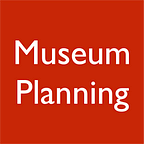Visitor Centers
This is a multi-part article about visitor centers. Part 1 defines visitor centers and explains their use. Part 2 discusses the components of a visitor center. Part 3 outlines how to create a visitor center. Part 4 delves into the future of visitor centers. Part 5 details the creation process of a visitor center.
Part 1: Defining Visitor Centers and Understanding Their Use
A visitor center is a physical location designed to help people new to an area understand its significance. These centers can represent a city, state, or corporate entity, such as a brewery or a manufacturer, and may also be linked to a winery or a food producer. Unlike museums, visitor centers don’t typically collect items related to their content area or function as academic research institutions. Some, like the Levi’s Visitor Center, may have an associated archive, but access is usually restricted to corporate staff, academics and researchers. Visitor centers often receive funding from various sources, including cities, states, corporations, for-profit entities, or government agencies, and some are affiliated with entities like the National Park Service.
Part 2: Understanding Visitor Centers
Visitor centers are commonly standalone buildings or part of larger complexes like town halls, corporate headquarters, or government buildings. They generally offer free admission and are funded by organizations like cities, states, Main Street Associations, corporations, or chambers of commerce. The primary aim of a visitor center is to showcase the benefits of a particular location or corporation, a goal that sometimes leads to the inclusion of subjective content, such as visitor testimonials or corporate promotional materials.
Part 3: Common Elements of a Visitor Center
These centers usually feature signage that denotes the content area and may indicate entrance fees or rules. A typical visitor center has an entry panel that provides an overview of the information and experiences available. Maps, including those for city and National Park Service centers, are common, and the centers may feature interactive displays, maps, games, and digital experiences like VR/AR apps.
Part 4: Understanding the Future of Visitor Centers
The future of visitor centers is leaning heavily towards digital content. This includes online previews of the physical location and interactive features on websites. Technologies like artificial intelligence, virtual and augmented reality, and Internet of Things automation are increasingly being integrated to enhance the visitor experience, marking a shift from traditional visitor center models.
Part 5: How to Create a Visitor Center
The creation process begins with a planning phase to understand the project’s objectives, considering budget, schedule, and location factors. Initial costs for strategy development can range from $60,000 to $100,000. The subsequent planning and design phase, focusing on the physical and digital aspects of the visitor center, may cost between $100,000 and $500,000, excluding fabrication. Total project budgets typically range from $1 million to over $20 million. Companies like Museum Planning LLC offer consultation and expertise in developing these visitor experiences.
This article was written by Mark Walhimer, founder of Museum Planning LLC. To learn more about visitor centers, feel free to contact Mark at mark@museumplanning.com; you can also learn more about our work at http://museumplanning.com.
